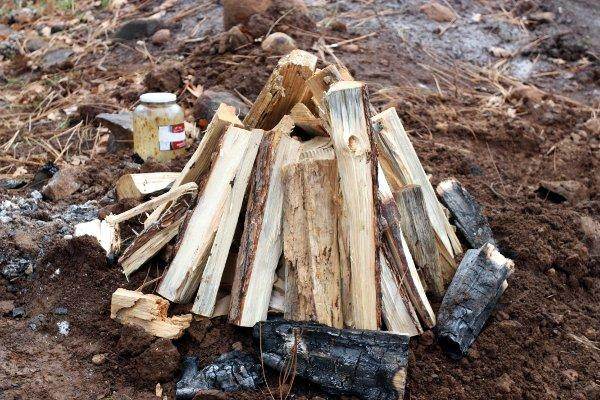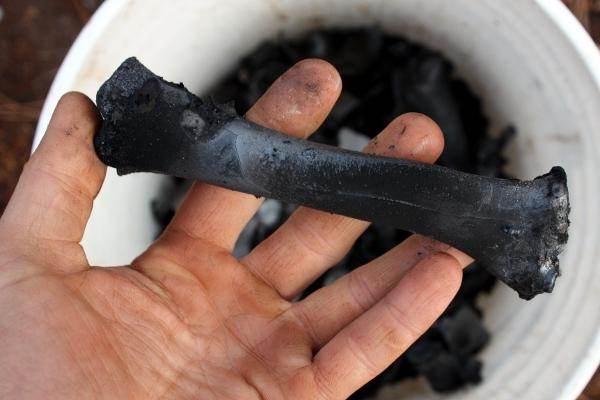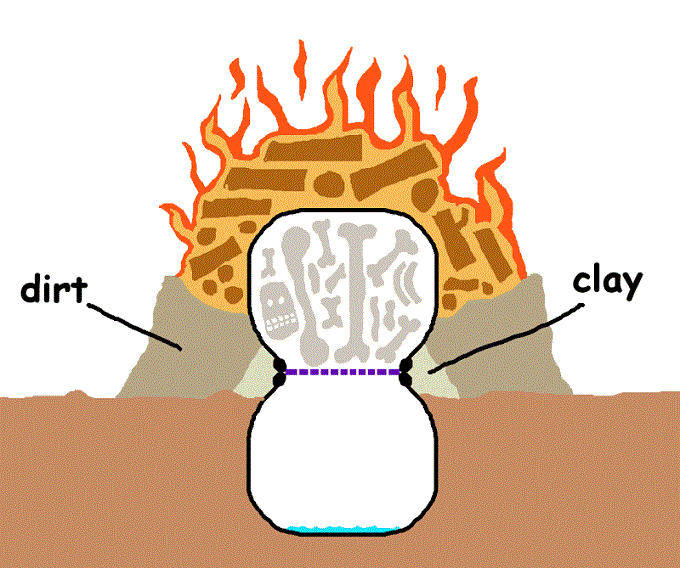


6 Ways To Keep Chickens - pdf download
will be released to subscribers in:
19 : 25 : 15







 2
2




 3
3




 1
1








 1
1




Windward Sustainability Education and Research Center
Permaculture Apprenticeships at Windward
America's First Permaculture Cemetery? Herland Forest Natural Burial Cemetery
 3
3




 6
6






Windward Sustainability Education and Research Center
Permaculture Apprenticeships at Windward
America's First Permaculture Cemetery? Herland Forest Natural Burial Cemetery
 1
1




"Solve world hunger . . . tell no one." The, the, the, . . . THE GRINCH!
 2
2




George Collins wrote:
My question for you (or anyone else that has reproduced Sepp's Sauce) is how has it worked for you?
I'm curious though, does applying a small amount to the trunk of the tree keep all herbivores from even attempting to nibble anywhere on the tree or, does the sauce only deter them from nibbling those parts of the tree where the sauce has been applied?
Also, if only a small amount on the trunk keeps herbivores from nibbling anywhere on a tree, would the sauce also work to keep deer out of a garden? If so, how would one go about using it to greatest advantage?
What about spraying it on? Wouldn't that be more effective for applying the sauce to the terminal shoots that are most likely to be predated upon?
Any other information that anyone might have about the actual use of bone sauce would be greatly appreciated.
Windward Sustainability Education and Research Center
Permaculture Apprenticeships at Windward
America's First Permaculture Cemetery? Herland Forest Natural Burial Cemetery
 4
4




"Solve world hunger . . . tell no one." The, the, the, . . . THE GRINCH!




Windward Sustainability Education and Research Center
Permaculture Apprenticeships at Windward
America's First Permaculture Cemetery? Herland Forest Natural Burial Cemetery
 2
2




Tail biting is a most serious welfare problem in pigs raised for slaughter. In instances of an outbreak of tail biting, scientists have recommended that farmers take measures such as removal of affected animals, provision of enrichment materials and application of repellents to the pigs' tails. However, no scientific study has ever confirmed the efficacy of any of these suggestions in counteracting an ongoing outbreak. Here, the efficacy of two repellent ointments, Dippel's oil and Stockholm tar, were examined in a tail-chew test. For this, a novel piece of nylon rope was used as a tail model to measure biting behaviour semi-automatically in 24 single-sex groups of growing pigs (total 264 pigs). Repeated measures analysis showed no effect of time, gender or unit (12 pens per unit), but a highly significant effect of treatment, in that both Stockholm tar and Dippel's oil significantly reduced rope manipulation compared to controls. These results suggest that Stockholm tar and Dippel's oil may be effective in reducing tail biting. The approach taken may be valuable in further testing of strategies to reduce tail biting and improving pig welfare.
"Solve world hunger . . . tell no one." The, the, the, . . . THE GRINCH!
 4
4





After surveying 22 earlier studies of deer repellents and then conducting their own controlled study at two different locations, researchers at Connecticut Agricultural Experiment Station concluded that egg-based repellents worked better than predator urines and blood-based products. Repellents applied more often were more effective than those applied less frequently.
Read more: http://www.motherearthnews.com/organic-gardening/deer-repellent-zb0z1208zmat.aspx#ixzz32MgPNpwC
Overall treatment ranks are presented for all three crops and summarized in Table 2. All the products tested reduced feeding damage as compared to the nonsprayed control. Rotten eggs, followed by Thiram, had the highest efficacy in reducing deer feeding damage. Yet, only rotten eggs maintained feeding damage under 10% for all crops during these tests. Feeding damage to plants sprayed with Havahart and the nontreated control after five days were respectively 2% and 93% for hosta, and 8% and 45% for sweetpotato.


"Solve world hunger . . . tell no one." The, the, the, . . . THE GRINCH!
 5
5




Windward Sustainability Education and Research Center
Permaculture Apprenticeships at Windward
America's First Permaculture Cemetery? Herland Forest Natural Burial Cemetery
 4
4




My books, movies, videos, podcasts, events ... the big collection of paul wheaton stuff!








If you are plagued by pests of the furry kind, try these deterrents. For possums, mulch your garden with sheep dags - possums are said to be none to partial to the smell of lanoline. Or spray your garden with neem oil or pongy fish fertiliser to repel them. Though keep fish fertiliser off young plants as it can burn the leaves. Stockholm Tar, available from farm and equestrian suppliers, can be sprayed onto fence posts and tree trunks to deter possums.
"Solve world hunger . . . tell no one." The, the, the, . . . THE GRINCH!




 2
2









Windward Sustainability Education and Research Center
Permaculture Apprenticeships at Windward
America's First Permaculture Cemetery? Herland Forest Natural Burial Cemetery
 1
1




 6
6





 1
1









May all beings be happy!
 2
2








May all beings be happy!
 3
3




Windward Sustainability Education and Research Center
Permaculture Apprenticeships at Windward
America's First Permaculture Cemetery? Herland Forest Natural Burial Cemetery




 2
2








Greg Burns wrote:In the book he does say to used smoked bones.
 3
3









 1
1




Works at a residential alternative high school in the Himalayas SECMOL.org . "Back home" is Cape Cod, E Coast USA.
 1
1




paul wheaton wrote:This thread is to discuss a bit of the Sepp Holzer's Permaculture article.
On the first full day class we toured a farm where the animals had wiped out nearly all growth. The land owner's intent was to get a fresh start. So, first run too many animals in there to eliminate all of the weeds and ... well .... everything. Then come in and plant the stuff you want to keep. Sepp was very direct and did not mince words: He did not approve.
Sepp pointed out how only the trees were left, but since animals had nibbled at the bark so much, he called these trees "standing dead."
Sepp then told us about how he makes a sort of bone sauce that he puts on trees and will keep the animals from nibbling the trees forever. ("What? Forever?" "decades." "It can't possibly last that long" "What can I say, it lasts that long." - and this same discussion was rehashed a few times and Sepp stuck to his guns. Decades.)
I first wrote this section from memory and it turns out I made lots of mistakes. Fortunately, somebody else that was there helped me to remember details and she has the book that mentions this (which is all in german, but she speaks german!)
First you start with a cast iron kettle and bury it a bit and put a cup of water in the bottom. The fill another kettle with bones, put a screen over it and then plop the bone kettle upside down on the other kettle. Then pack clay around the edges to make a good seal. Then Pile up some dirt and build a big fire over the whole thing.
Here is my lame attempt at drawing Sepp Holzer's bone sauce contraption

Keep the fire going for an hour or two and then let it sit for a day. Then collect the nasty gunk from the bottom. Apparently this smells awful. Smear a little of this around the trunk of any tree and animals won't ever touch that tree.
 1
1




My books, movies, videos, podcasts, events ... the big collection of paul wheaton stuff!
 1
1




paul wheaton wrote:I think that if it came from below, it would be far easier to do. Because you would then do it a lot like you cook lots of things. Therefore, I think that this much more complicated technique is required.
Heavy emphasis on the "I think". I did not press this question to Sepp - although I would be interested to hear what he says.
 1
1




 3
3





|
I can't take it! You are too smart for me! Here is the tiny ad:
A PDC for cold climate homesteaders
http://permaculture-design-course.com
|






